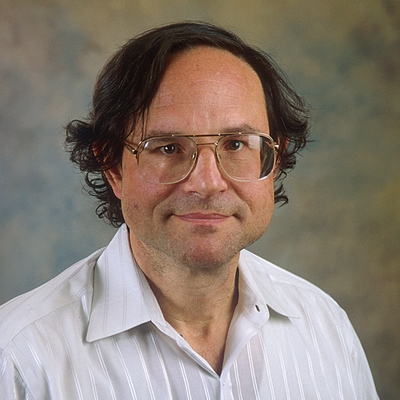
Research Topics
Calcium Microdomain Signaling in Intracellular Communication: The heartbeat is initiated by the release of calcium from stores in the sarcoplasmic reticulum (SR). It is now well established that the trigger for this release is the entry of a much smaller amount of calcium through voltage-controlled L-type calcium channels in the cell membrane. This is the mechanism of calcium-induced calcium release (CICR), which is known to be mediated by ryanodine receptors, which are calcium sensitive calcium channels located in the membrane of the SR. Similar ryanodine receptors are located on intracellular calcium stores in a wide variety of cell types, where their function is not yet understood.
Biography
Dr. Stern studied theoretical physics at Princeton and received an M.D. degree from University of Pennsylvania. Following internship, he was a Staff Fellow in the Laboratory of Technical Development of the NHLBI, where he invented a method to measure tissue microvascular blood flow using laser light scattering. Following an Internal Medicine residency at University of Michigan and Cardiology fellowship at Johns Hopkins, Dr. Stern joined the faculty in Cardiology at Johns Hopkins in 1981. His research on laser light scattering fluctuations in cardiac muscle, in collaboration with the Laboratory of Cardiovascular Science at GRC, led to the discovery that apparently resting heart muscle produces continuous, random asynchronous subcellular waves of contraction, which proved to be due to propagated calcium release from the sarcoplasmic reticulum. This led directly to his present interest in the basic mechanism of cardiac excitation-contraction coupling. His studies on the physiology of excitation-contraction coupling in single cardiac myocytes during extreme hypoxia led to the finding that reoxygenation injury is due to calcium shifts brought about by ionic conditions created during a vulnerable period of complete energy depletion. In parallel with this work, Dr. Stern carried out mathematic modeling of the basic mechanisms of sarcoplasmic reticulum calcium release. Based on this work he proposed, in 1992, the local control hypothesis of excitation contraction coupling, has become the leading theory of this process. In 1996, Dr. Stern joined LCS full time as a member of the Senior Biomedical Research Service.
Selected Publications
- Stern MD, Maltseva LA, Juhaszova M, Sollott SJ, Lakatta EG, Maltsev VA. Hierarchical clustering of ryanodine receptors enables emergence of a calcium clock in sinoatrial node cells. J Gen Physiol. 2014;143(5):577-604.
- Maltsev AV, Maltsev VA, Stern MD. Clusters of calcium release channels harness the Ising phase transition to confine their elementary intracellular signals. Proc Natl Acad Sci U S A. 2017;114(29):7525-7530.
- Maltsev VA, Stern MD. The paradigm shift: Heartbeat initiation without "the pacemaker cell". Front Physiol. 2022;13:1090162.
- Stern MD. Patrimony and the evolution of risk-taking. PLoS One. 2010;5(7):e11656.
- Stern MD, Ríos E, Maltsev VA. Life and death of a cardiac calcium spark. J Gen Physiol. 2013;142(3):257-74.
Related Scientific Focus Areas




Biomedical Engineering and Biophysics
View additional Principal Investigators in Biomedical Engineering and Biophysics

Social and Behavioral Sciences
View additional Principal Investigators in Social and Behavioral Sciences
This page was last updated on Thursday, August 17, 2023